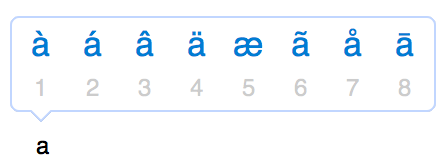

The letters that can receive accents are the five vowels – a, e, i, o, u. The Spanish language has three types of accent: the well-known tilde (ñ), the acute accent (ú) that is usually indicated in speech with word stress, and the diaeresis (ü). Spanish natives refer to this symbol as “la tilde de la eñe” or “la virgulilla”. In Spanish, accents are also called “tilde” – although in English the exact same word refers to the “~” symbol. These represent an extra symbol or glyph added to a letter. Starting with the basics it’s important to know that accents or accent marks can also be referred to as diacritics, diacritical marks or diacritical signs. So here are the most important facts you should know about Spanish accents. And if you want to master Spanish, that can’t happen to you. It’s important to realize that an accent mark – or the lack of it – can change the meaning of a word completely. But don’t give up yet! Accents are important in any language (that uses accent marks) – not just in Spanish. If you don’t know the main Spanish accents rules yet, these questions may give you a major headache. How do you type them on a classic keyboard? How does the pronunciation of a certain word change when you use accent marks? Do they influence stress? How can you remember when to use them? Spanish accents – or any other type of accents – are a pain in the neck for someone whose first language doesn’t require accent marks.


 0 kommentar(er)
0 kommentar(er)
